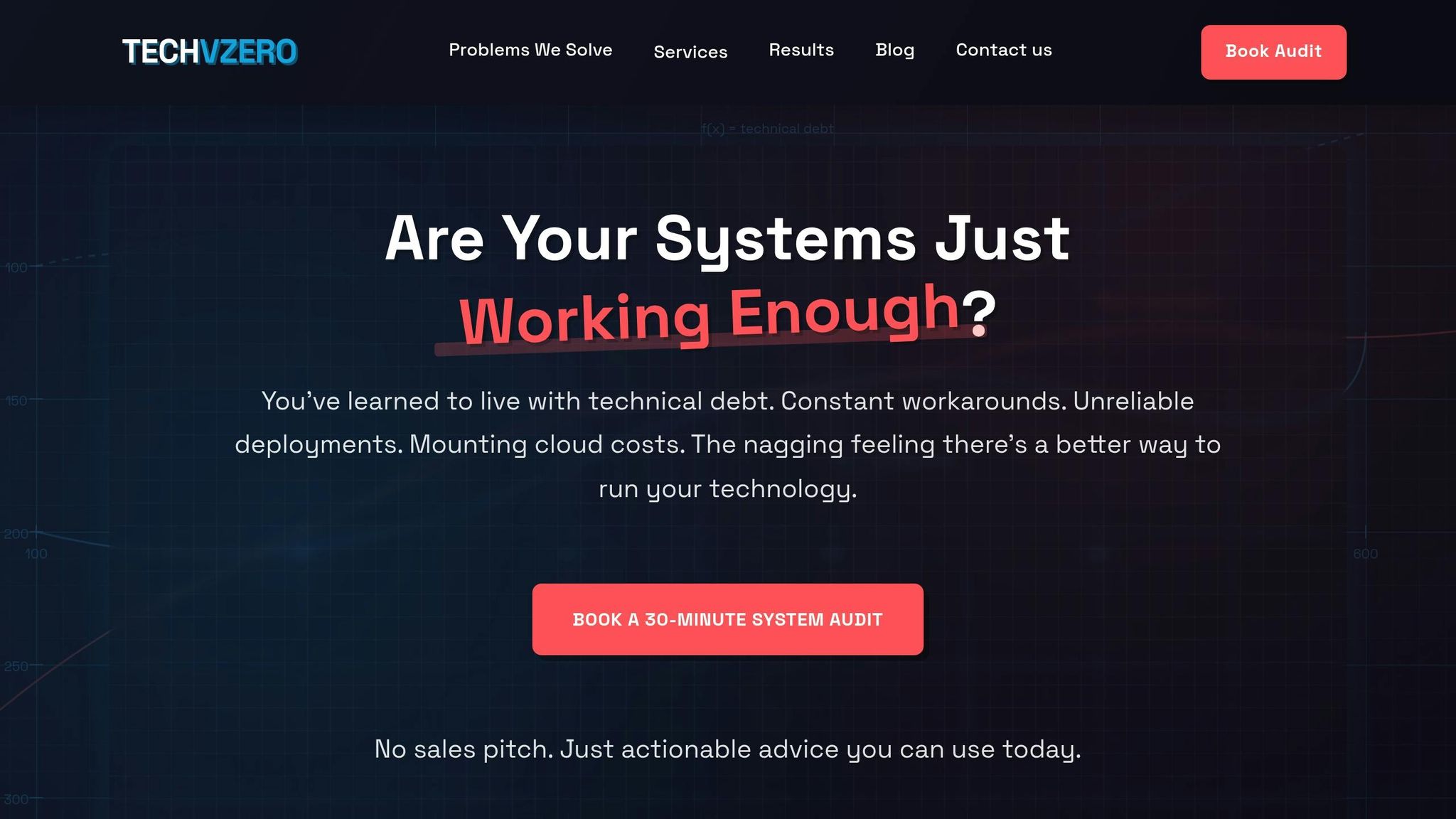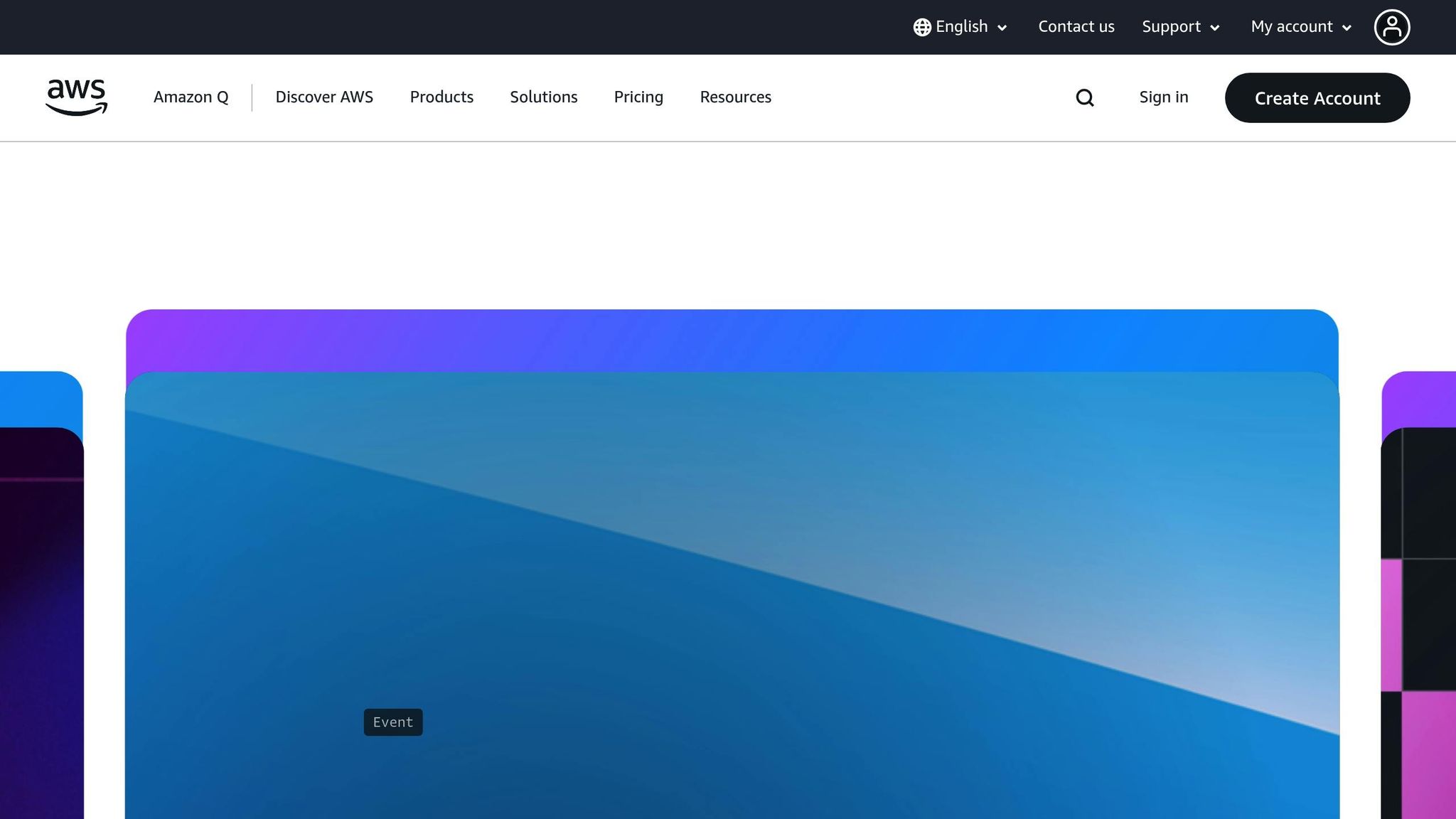AWS Spot Instances: AI Cost Optimization Tips

Want to save up to 90% on AWS EC2 costs? Spot Instances are your answer. By bidding on unused AWS compute capacity, you can drastically cut expenses compared to On-Demand pricing. But there’s a catch: Spot Instances can be interrupted with just 2 minutes’ notice. Here’s how AI helps you manage this risk while maximizing savings.
Key Takeaways:
- Spot Instances: Save up to 90% compared to On-Demand instances.
- AI Solutions: Automate workload migration, predict interruptions, and optimize costs.
- Best Practices: Use multiple instance types/zones, attribute-based selection, and interruption recovery strategies.
- Real Results: Companies like Sedai report cutting EC2 costs by 75–90% using AI.
Quick Tip: Combine Spot Instances with On-Demand or Reserved Instances for critical workloads to strike the right balance between cost and reliability.
Keep reading to learn how AI simplifies Spot Instance management, predicts price changes, and ensures smooth scaling.
AI Methods for Spot Instance Cost Optimization
Automated Workload Distribution
AI is reshaping how organizations manage workloads across AWS instance types by analyzing usage patterns and distributing tasks among Spot, On-Demand, and Reserved Instances. This dynamic approach ensures workloads are always running on the most cost-efficient options.
The system keeps a close eye on real-time demand and capacity. For instance, when Spot Instance capacity is plentiful and prices drop, AI shifts appropriate workloads from more expensive On-Demand instances to Spot Instances. On the flip side, if Spot availability shrinks or the risk of interruptions rises, critical workloads are automatically moved to On-Demand instances to maintain reliability.
One SaaS provider reported cutting EC2 costs by 80% through Sedai’s automated migration system. This AI-powered workload management uses attribute-based selection to match instances to specific CPU, memory, and storage requirements, ensuring every workload runs cost-effectively.
AI doesn’t stop there – it also predicts price changes and interruption risks to drive even greater savings.
Price and Interruption Prediction with AI
AI takes the guesswork out of managing Spot Instances by forecasting price changes and potential interruptions. By analyzing historical pricing, capacity trends, and AWS market conditions, these systems predict when interruptions are likely to occur.
"Sedai’s AI-powered system predicts interruptions before they happen and proactively moves workloads to available instances." – Nikhil Gopinath
These predictions rely on analyzing factors like regional capacity patterns, demand for specific instance types, and seasonal usage trends. With this data, AI determines the best times for workload placement or migration, allowing businesses to stay ahead of disruptions and maintain smooth operations.
Price prediction is another game-changer. By monitoring pricing trends across availability zones and instance types, AI helps organizations time their Spot Instance usage for maximum savings. If prices are expected to spike, workloads can be temporarily shifted to Reserved Instances or lower-cost Spot alternatives in other regions.
For example, an e-commerce retailer used Sedai’s AI-driven platform to scale workloads with Spot Instances during the 2025 peak shopping season, slashing EC2 costs by 75%. The system ensured top performance during high-traffic periods while avoiding cost overruns and maintaining a seamless customer experience.
But AI doesn’t just predict – it also dynamically adjusts resources to keep costs and performance in check.
AI-Based Resource Scaling
AI takes resource scaling to the next level by analyzing workload patterns and performance to determine the best mix of instance types and sizes. By monitoring compute usage and application needs, the system ensures workloads are distributed across AWS instances for maximum efficiency.
The AI evaluates application characteristics, fault tolerance levels, and performance requirements to decide which workloads are ideal for Spot Instances without jeopardizing reliability. This ensures every application runs on the most cost-effective infrastructure available.
It also optimizes Auto Scaling Groups (ASG) by incorporating Spot Instances for cost-effective scaling. AI calculates the right balance of instance types within each ASG, ensuring that organizations save money while meeting performance and availability standards.
By continuously analyzing pricing trends and capacity availability, the system identifies the best instance types in real time. This dynamic scaling approach meets immediate performance demands while keeping long-term costs under control – all without compromising reliability.
Automated Interruption Response
Spot Instance interruptions are a known challenge, but AI steps in with automated fallback and recovery processes that minimize disruption. These systems go beyond basic failover, tailoring recovery strategies to the unique needs of each workload.
AI ensures uninterrupted service by proactively migrating workloads before AWS terminates instances. By analyzing interruption patterns and capacity signals, the system initiates migrations ahead of time, avoiding the chaos of reactive approaches.
"By using Sedai’s AI-powered cloud optimization, businesses can reduce manual effort and maximize savings while maintaining application performance." – Nikhil Gopinath
Recovery processes are streamlined, combining checkpoint management, state preservation, and intelligent restart procedures. Depending on the workload, AI selects the best recovery method – whether that’s restarting on alternative instances, gradually migrating to On-Demand capacity, or adjusting scaling to handle reduced availability.
This comprehensive approach to managing interruptions allows organizations to take full advantage of Spot Instance savings without risking service reliability. With AI at the helm, businesses can significantly reduce AWS costs while ensuring their applications run smoothly.
Spot Instance Management Best Practices
Use Multiple Instance Types and Zones
Spreading your workload across various instance sizes, generations, and zones is key to keeping costs low and minimizing interruptions. For example, the NFL leverages 4,000 EC2 Spot Instances across more than 20 types, saving $2 million each season.
Using Spot Placement Scores can guide you to regions and Availability Zones with a better chance of securing the capacity you need. Running Spot Instances during off-peak hours or in less busy regions can further improve availability and cut costs. Don’t overlook previous-generation instances – they can expand your options and reduce competition for capacity.
Select Instances Based on Performance Attributes
Instead of manually picking specific instance names, use attribute-based selection to match your CPU, memory, and storage needs. This approach not only simplifies setup but also ensures that new instance types meeting your criteria are automatically included.
By default, consider the price-capacity-optimized allocation strategy. It strikes a balance between cost and reliability. For example, this strategy resulted in costs only 5 cents (1%) higher than the lowest-price method, while reducing the interruption rate to just 3%, compared to 20% with the lowest-price approach. Tailor your instance choices to your application’s requirements – compute-optimized instances work well for CPU-heavy tasks, while memory- or storage-optimized types suit data-intensive workloads.
Once you’ve chosen the right instances, ensure your applications are prepared to handle potential interruptions.
Design Applications for Interruption Recovery
To fully benefit from Spot Instances while maintaining reliability, your applications must be built to recover seamlessly from interruptions.
Use checkpointing to save progress externally, so your applications can restart quickly from the last saved state. For containerized workloads, tools like the AWS Node Termination Handler for EKS clusters or enabling Spot Instance draining for ECS services can help ensure smooth shutdowns and restarts.
Take advantage of the 2-minute interruption notice to save state and trigger automated failovers using EventBridge or AWS Lambda. Distributing workloads across multiple instances and leveraging AWS Auto Scaling Groups to replace interrupted instances automatically can help maintain both capacity and performance, even during disruptions.
AI Tools for Spot Instance Management
AI Solutions for Spot Instance Optimization
AI-powered tools have taken the guesswork out of managing Spot Instances by automating key tasks like pricing analysis, interruption forecasting, and workload migration. These tools track AWS workloads in real time, analyze pricing trends, and shift workloads across instance types as needed. They also fine-tune Auto Scaling Groups to adapt to fluctuating market conditions, ensuring both cost savings and operational stability.
Some platforms have delivered striking results. For example, Sedai has been shown to cut EC2 costs by up to 90% without sacrificing performance. It achieves this through autonomous decision-making and constant monitoring. Similarly, CAST AI, which specializes in Kubernetes optimization, demonstrated a dramatic cost reduction in testing – slashing monthly compute costs from $691.20 to just $65.01 using an AI-driven Spot Instance policy on an open-source e-commerce demo app. These advancements pave the way for services like those offered by TECHVZERO to provide even more tailored solutions.
TECHVZERO‘s Spot Instance Optimization Services

TECHVZERO takes Spot Instance management to the next level by integrating DevOps, data engineering, and AI-driven automation. Their approach eliminates the need for manual intervention in tasks such as workload migration, instance selection, and interruption handling. By working seamlessly with AWS, TECHVZERO ensures real-time monitoring and rapid recovery from interruptions.
Their automation-first strategy delivers measurable benefits, including reduced costs, quicker deployments, and minimized downtime. Furthermore, their data engineering expertise offers actionable insights into usage patterns, enabling smarter resource allocation and capacity planning. Beyond basic Spot Instance management, TECHVZERO provides end-to-end services aimed at comprehensive cloud cost optimization.
When to Implement AI Solutions
Organizations with complex and dynamic workloads are prime candidates for adopting AI-driven Spot Instance management. If managing interruptions or maintaining cost efficiency has become a recurring challenge due to fluctuating workload demands, it’s time to consider these solutions. Businesses with high-volume operations, such as e-commerce platforms or SaaS providers, stand to gain the most from these tools.
Additionally, applications with built-in recovery mechanisms that can withstand brief interruptions are ideal for aggressive Spot Instance optimization. Even mission-critical workloads can benefit when paired with robust failover systems, making AI solutions a smart choice for balancing cost savings with reliability.
sbb-itb-f9e5962
Conclusion: AWS Cost Savings with Spot Instances and AI

Main Tips for Spot Instance Optimization
To make the most of AWS Spot Instances, combining AI-driven tools with strategic planning is key. Automation powered by AI can help monitor pricing trends, predict interruptions, and seamlessly migrate workloads – leading to savings of up to 90% compared to On-Demand pricing. Diversifying instance sizes, generations, and Availability Zones further enhances cost efficiency while minimizing risks.
For smarter instance selection, focus on performance attributes, Spot placement scores, and price-capacity strategies. This approach is especially effective for Kubernetes clusters, where partial Spot Instance usage has shown cost reductions of around 59%, and full Spot deployments have slashed compute expenses by approximately 77%.
How TECHVZERO Supports Cloud Cost Reduction
TECHVZERO offers a comprehensive solution tailored to help businesses reduce cloud costs while maintaining performance. Their approach integrates end-to-end automation, eliminating the need for manual workload migration, instance selection, and interruption management. This ensures resources are optimized without unnecessary overhead.
With real-time monitoring and incident recovery, TECHVZERO helps maintain uptime while maximizing savings. Their solutions combine security, performance tuning, and cost management strategies, resulting in faster deployments, reduced downtime, and measurable savings.
For organizations with complex or large-scale operations, TECHVZERO’s AI-driven services provide a strategic edge. Beyond cloud infrastructure, their expertise extends to digital marketing and MVP development, helping businesses refine their entire technology stack for better efficiency and growth.
How to Setup AWS Spot Instances and Save Big on EC2 Costs! (Step-By-Step Tutorial)
FAQs
How does AI help predict Spot Instance interruptions and ensure smooth workload transitions?
AI plays a crucial role in predicting Spot Instance interruptions by analyzing important signals like AWS’s rebalance recommendations and historical interruption patterns. By examining these factors, it can anticipate when an instance might be terminated and prepare accordingly.
To avoid disruptions, AI shifts workloads dynamically across various instance types or regions before an interruption takes place. This approach not only keeps operations running smoothly but also minimizes downtime and manages costs effectively. With AI in the mix, businesses can maintain strong performance while making the most of the cost-saving benefits of Spot Instances.
How can I maintain application reliability while using AWS Spot Instances?
To ensure your applications remain reliable when using AWS Spot Instances, it’s crucial to design them as fault-tolerant and stateless systems. This approach allows your applications to handle interruptions without breaking a sweat. Incorporating tools like Spot Fleet and spreading workloads across multiple availability zones can also boost redundancy and keep your services running smoothly.
AWS offers features like Spot Rebalancing recommendations, which can help you stay ahead of potential interruptions. Automation is another game-changer – set up workflows to manage instance interruptions automatically. Additionally, using capacity-optimized allocation strategies can reduce the chances of disruptions. By combining these methods, you can strike a balance between cutting costs and maintaining dependable application performance.
What’s the best way for businesses to identify the ideal times and regions to use AWS Spot Instances for cost savings?
To get the most out of AWS Spot Instances and save money, it’s smart to target regions with steady capacity and fewer interruptions. A handy tool for this is AWS Spot Instance Advisor, which helps pinpoint these regions and gives insights into potential savings. Another useful strategy is to study regional price differences and historical spot pricing trends. This can help you spot times of lower demand when prices are usually more affordable.
For optimal results, keep an eye on capacity availability and interruption rates on a regular basis. Also, think about running your workloads during off-peak hours when spot prices are generally lower. This way, you can strike a balance between cutting costs and maintaining reliable operations.